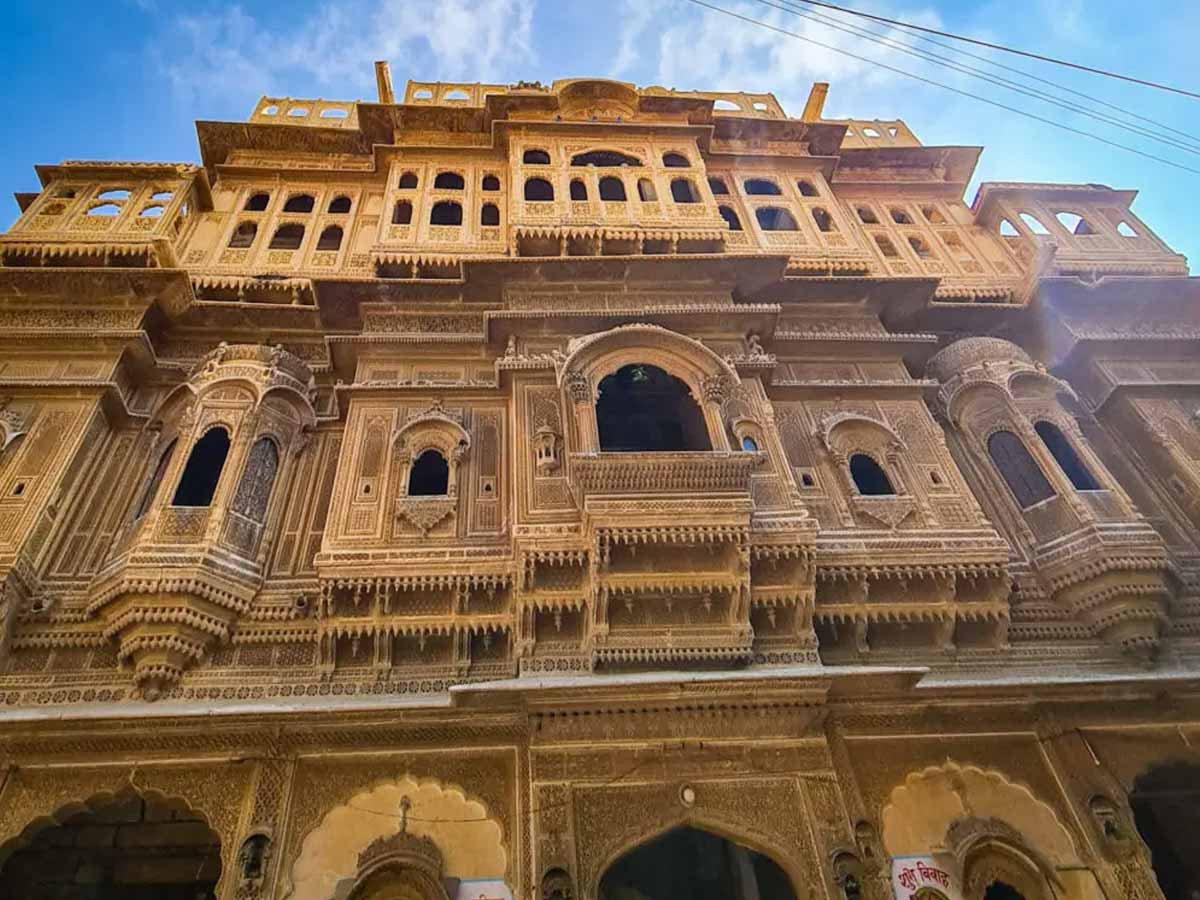Nathmal ki Haveli is an ornate architecture in the heart of the city Jaisalmer which is otherwise known as the land of the Golden Fort. It was commissioned to serve as the residence of the then prime minister Diwan Mohata Nathmal. The extraordinary exteriors dripping with carvings and the virtuoso work of the Haveli (similar on either side but not identical) with two elephants made of limestone guarding the entrance is the sight that every visitor is privileged to see.
As the name suggests, the architecture and carvings that adorn the fort of Jaisalmer are mostly built out of yellow sandstone. Thus when the sun rays fall on these structures, they radiate like gold. Apart from the extraordinary paintings using 1.5kg of gold leaf and carvings on walls, this confluence of the Islamic and Rajput style of architecture has an exciting story. It is said that the two architects, Hathi and Lulu started building two different facets of the building. Since there were no instruments those days to keep track of the continuity, the building came up in an irregular shape. Surprisingly, the paintings on the interior are depictions of modern amenities like cars and fans which the two architects had painted from the descriptions given to them by people who have seen it despite having never seen it themselves in real life. Interesting? Well, see it for yourself.

History of Nathmal ki Haveli
Nathmal ki Haveli was built in 1885 and is named after the then Prime Minister of Jaisalmer- Mohata Nathmal, by his brothers Lulu and Hathi. It is believed that both the brothers started building the haveli at the same time but individually. They divided the area into two segments and started off. Since they did not have any means to keep a check on the symmetry and continuity, they ended up building an irregular unique structure. So, although both parts of the haveli are identical, they are not similar. Nevertheless, the haveli boasts of excellent craftsmanship and architecture and still continues to be one of the most admired structure in all of Jaisalmer.
Architecture of Nathmal ki Haveli
Boasting of a wonderful blend of the Islamic, Rajput and Rajasthani architectural styles, Nathmal Ki Haveli is one of the most splendid constructions of the 19th century. Built with beautiful yellow sandstones, the Haveli looks especially magnificent at sunrises and sunset when the entire edifice lights up in yellow rays of the sun. The exterior walls have elaborate carvings on them and the interiors have been adorned with rich paintings from the olden days. The roof is help up by a number of sturdy pillars which have light paintings of fans and cars on them, suggesting the arrival of the modern era and the oncoming of technology. The pillars also have pictures of flowers, cattles and horses to allow a peek in the asic lifestyle of the people of the kingdom at that time.
In addition to that, two life sized replicas of majestic elephants have been carved out of yellow sandstone and have been placed at the entrance. These mighty elephants sculptures flanking the main gate are not only suggestive of guarding the Haveli but are also placed to welcome the guests visiting the monument. It is believed that the main chamber of the Haveli has been carved out of rock and the first storey has been carved out of a solid rock boulder. Besides, the haveli is replete with ‘jharokas’ i.e. balconies and spacious courtyards to suit the climate and weather of the desert land. All in all, the haveli is an architectural masterpiece and still continues to be one of the most visited places in Jaisalmer.
Jaisalmer tourism is one of the best known in the state of Rajasthan as it is full of hospitality. Jaysalmar (or Jaisalmer) is a nicknamed as ‘The Sun City’ and ‘The Golden City’ for it’s bright, hot days and golden colored sand. Alike other Rajasthani cities, Jaisalmer tour will take foreigners towards forts, and other architectural monuments and there are lots of Jaisalmer tourist places to visit in the winters.